Top speed 505 km/h Length 13 m | Wingspan 17 m | |
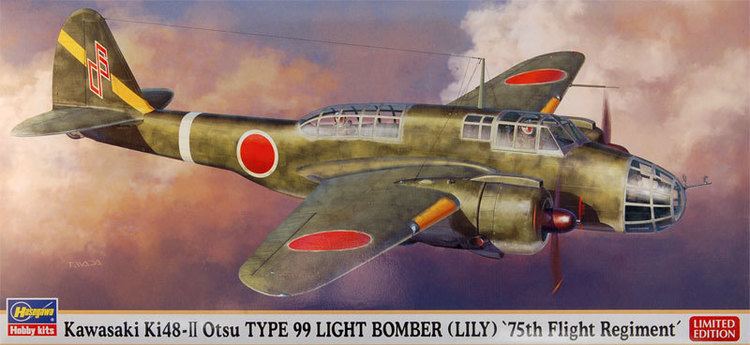 | ||
Manufacturer Kawasaki Aerospace Company | ||
Il2 1946 kawasaki ki 48 sokei light bomber
The Kawasaki Ki-48, 九九式双発軽爆撃機(shiki-souhatu-keibaku,) shortened to 'Sokei', Army Type 99 Twin-engined Light Bomber, was a Japanese twin-engine light bomber that was used during World War II. Its Allied reporting name was "Lily".
Contents
- Il2 1946 kawasaki ki 48 sokei light bomber
- Kawasaki ki 48
- Design and development
- Operational history
- Ki 48 Special Attack Unit
- Variants
- Survivors
- Operators
- Specifications Ki 48 IIa
- References
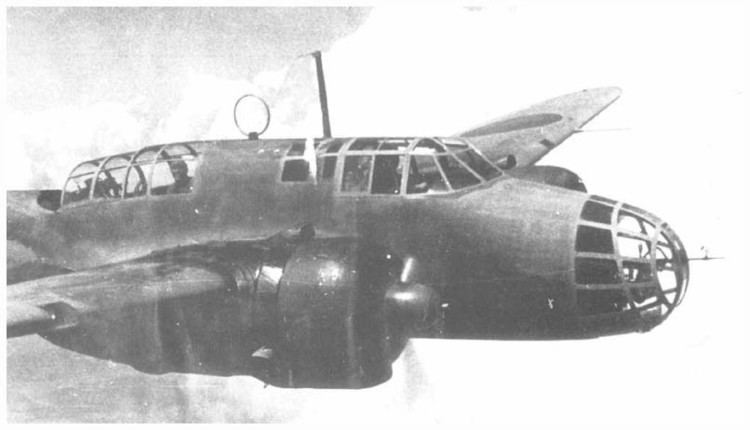
Kawasaki ki 48
Design and development

The development of the aircraft began at the end of 1937 at the request of the Japanese military high command. Kawasaki received an order to develop a "high-speed bomber" capable of 480 km/h (300 mph) at 3,000 m (9,840 ft), and able to reach 5,000 m (16,400 ft) within 10 minutes. It was inspired by the Soviet Tupolev SB.
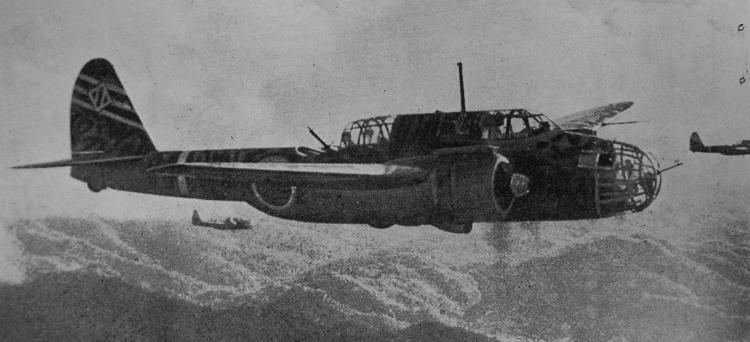
Kawasaki had the advantage of the experience of designing the Ki-45 twin-engined heavy fighter. Most technical problems were solved; however the aircraft had a number of shortcomings. It carried only an 800 kg (1,760 lb) bombload. This was actually more than contemporary light bombers such as the Bristol Blenheim or Tupolev Tu-2, and only slightly less than light bombers designed several years later, such as the A-20 Havoc, and the strikingly similar-appearing Martin Maryland and Baltimore. Speed was intended to be its primary defense, much like the later, unarmed, De Havilland Mosquito. So it had only three machine guns (again, an equivalent armament to contemporary light bombers). This made it very vulnerable to enemy fighters later in the war, once they became fast enough to actually catch it. The flight characteristics of the Ki-48 also left much to be desired. Newer generations of Allied fighters caught up in speed, and eventually, the Ki-48 was too slow to outrun them, while superior modern Japanese aircraft, such as the Yokosuka P1Y and the Mitsubishi Ki-67, could only be produced in small numbers. The first versions were lightly armoured, so the Ki-48 was quite aerobatic, and could loop and turn with an experienced pilot at the controls. The aircraft was often used as a dive bomber in Burma. The aircraft was not necessarily a failure, and was considered an acceptable light bomber for the first few years of the war by many historians. Much like the Mitsubishi A6M Zero fighter, it was satisfactory for the period when it was designed and produced, but had to be used against much newer and faster competition, due to Japan's inability to produce enough newer aircraft.
Operational history
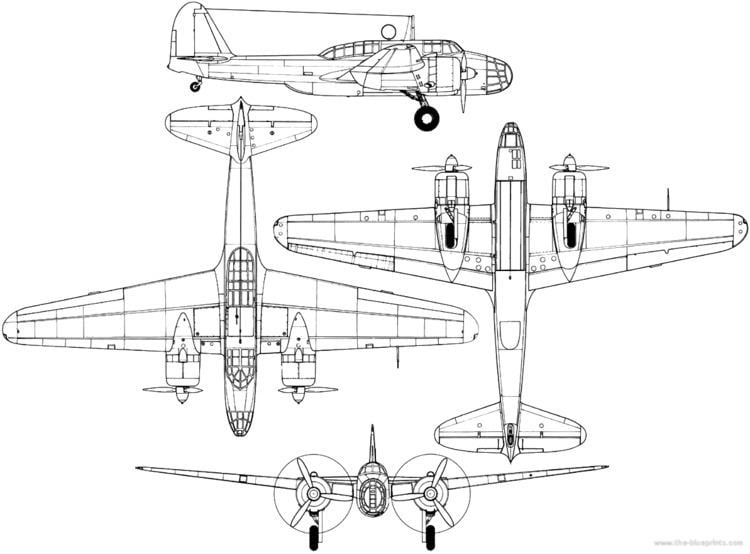
The aircraft served in China from late 1940, replacing the Kawasaki Ki-32, and were widely used in the Philippines, Malaya, Burma, New Guinea, the Solomon Islands and the Dutch East Indies, where the Ki-48 Ia and Ib models, slow and badly armed, were supplemented by the marginally improved Ki-48 IIa and IIc, which were maintained in service along with the older types until the end of the war.
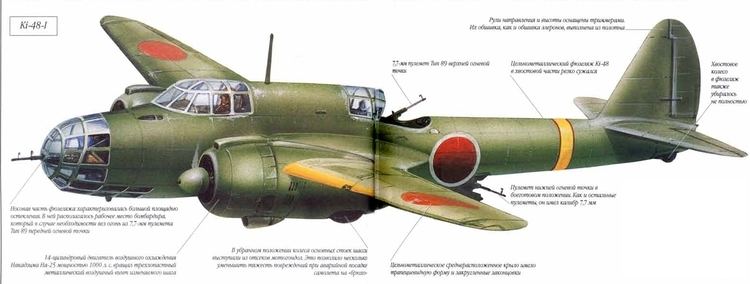
All models continued in service until the Battle of Okinawa during April 1945, when many were converted into kamikaze aircraft (Ki-48-II KAI Tai-Atari) armed with an 800 kg (1,760 lb) bomb. Some aircraft was modified to act as testbeds; one carried the Kawasaki Ki-148 guided missile intended for use on the Kawasaki Ki-102 in late 1944, and one was modified to test a Ne-0 pulsejet engine in late 1944-early 1945.
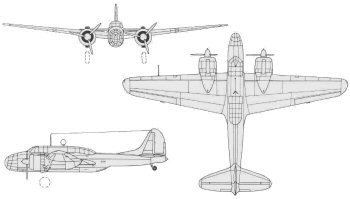
The fact that all models continued in service until 1945 reflects that many Ki-48s survived more often than not. This was due to the use of small ship formations (3–10 aircraft) escorted by large numbers of fighters (25–75), typically Nakajima Ki-43s. Although not as fast as more modern fighters, after 1942, the aircraft was still fast enough to enable it to often avoid interception unless it ran into a standing patrol of fighters. The 90th Air Regiment of the 5th Air Army (based in Hopei, north China) equipped with Ki-48s was the only Japanese air unit in China proper to engage the Soviets, although others were advanced in preparation. It flew 20 sorties against the Soviets during 14 August 1945.
Ki-48 Special Attack Unit
The British Pacific Fleet departed from Ceylon on 16 January 1945 en route to Australia, and struck Japanese-held oil wells and refineries at Palembang, Sumatra on 24–29 January 1945 in Operation Meridian.
On 29 January, seven Kawasaki Ki-48 of the Army's Shichisi Mitate Tokubetsu Kōgeki Tai counter-attacked the Allied fleet at low level as the British aircraft were returning from Palembang. The British radar picture was confused by the presence of over 100 friendly aircraft and the first two or three Supermarine Seafire CAP interceptions did not occur until just before the Ki-48 formation entered the air defence zone. The last pair of Seafires chased the five remaining Ki-48s inside the screen, and with the support of returning Vought F4U Corsairs and Grumman F6F Hellcats which had just been scrambled, shot down all of them, amongst intense AA fire. One Seafire was slightly damaged and one Hellcat was written off by friendly fire, but the only ship to be damaged was the carrier HMS Illustrious, hit by heavy AA shells.
Such success, minor by Pacific fighting standards at the time, gave the British Pacific Fleet useful expertise and confidence in its ability to deal with kamikaze attacks.
Variants
Survivors
The China Aviation Museum in Datangshan has a Kawasaki Ki-48 in Chinese Liberation Army Air Force colours. Some of the parts of the airplane are reproduced. The Indonesian Air Force Museum is also claimed to have a Ki-48 in its collection.
Operators
Specifications (Ki-48-IIa)
Data from Encyclopedia of Military Aircraft; Japanese Aircraft of the Pacific War; Kawasaki Ki.48-I/II Sokei in Japanese Army Air Force-CNAF & IPSF Service, Aircam No.32
General characteristics
Performance
Armament
